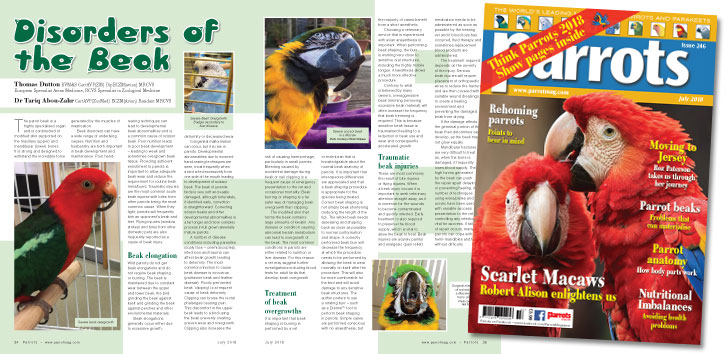Disorders of the Beak

Thomas Dutton BVM&S CertAVP(ZM) DipECZM(avian) MRCVS European Specialist Avian Medicine, RCVS Specialist in Zoological Medicine
Dr Tariq Abou-Zahr CertAVP(ZooMed) ECZM(Avian) Resident MRCVS
The parrot beak is a highly specialised organ and is constructed of modified skin supported on the maxillary (upper) and mandibular (lower) bones. It is strong and designed to withstand the incredible force generated by the muscles of mastication.
Beak disorders can have a wide range of underlying causes. Nutrition and husbandry are both important in beak development and maintenance. Poor hand-rearing techniques can lead to developmental beak abnormalities and is a common cause of scissor beak. Poor nutrition leads to poor beak development – leading to weak and sometimes overgrown beak tissue. Providing sufficient enrichment to parrots is important to allow adequate beak wear and reduce the requirement for routine beak trims/burrs. Traumatic injuries are the most common acute beak injuries with bites from other parrots being the most common cause. When they fight, parrots will frequently bite an opponent’s beak and feet. Flying injuries (window strikes) and bites from other domestic pets are also frequently reported as a cause of beak injury.
Buy Now!



